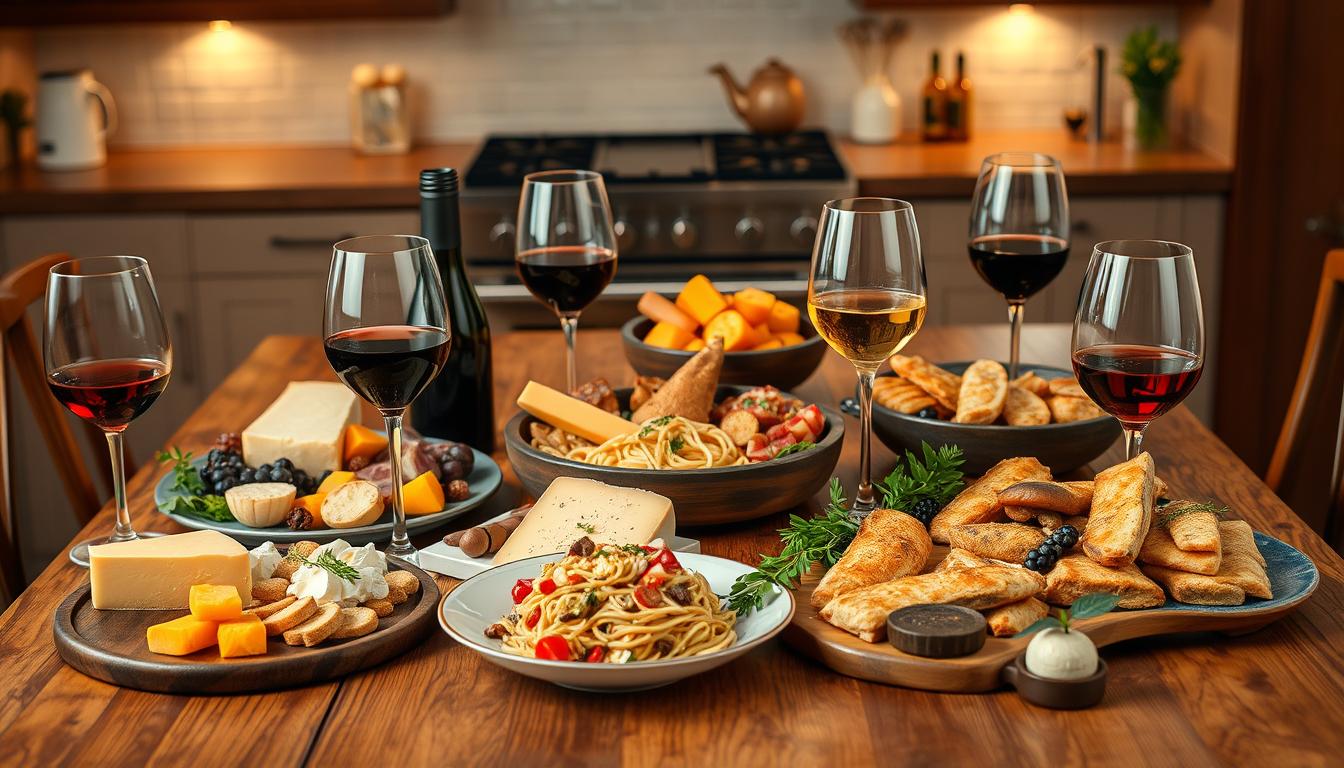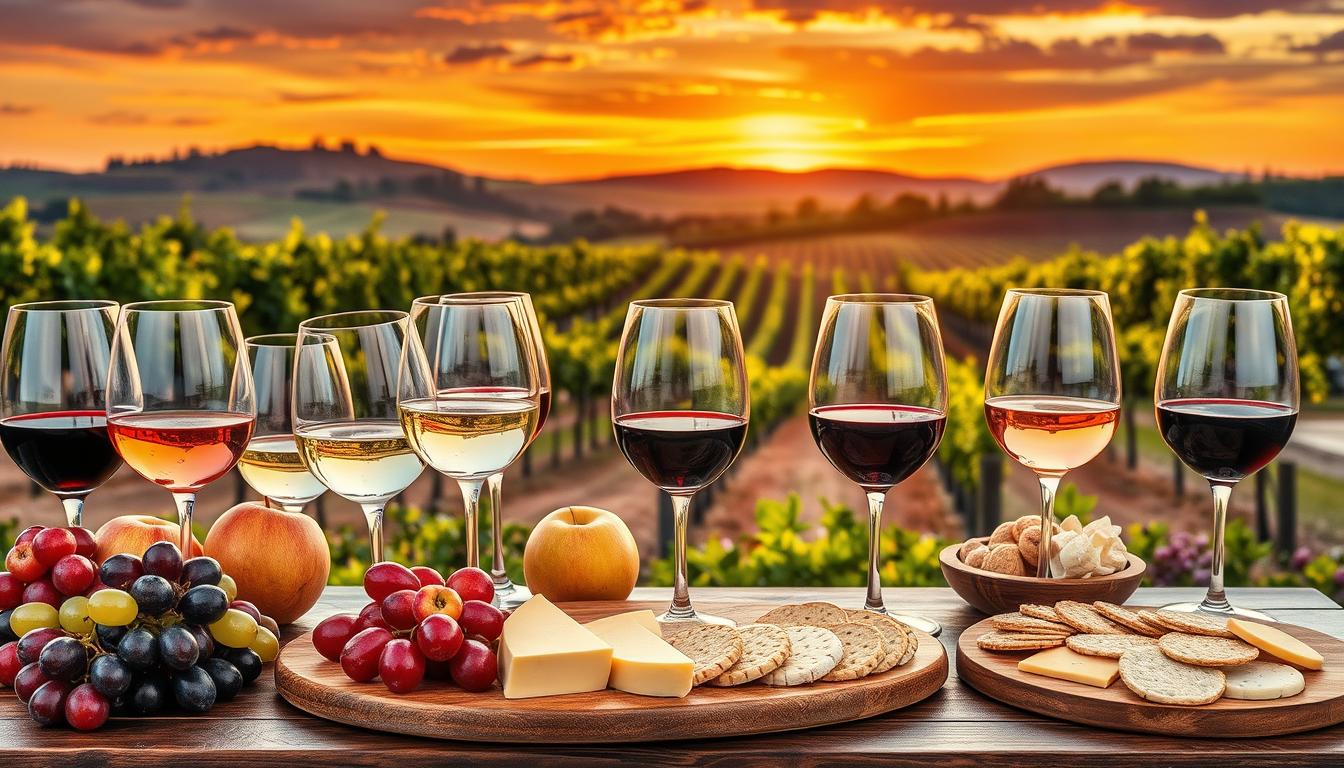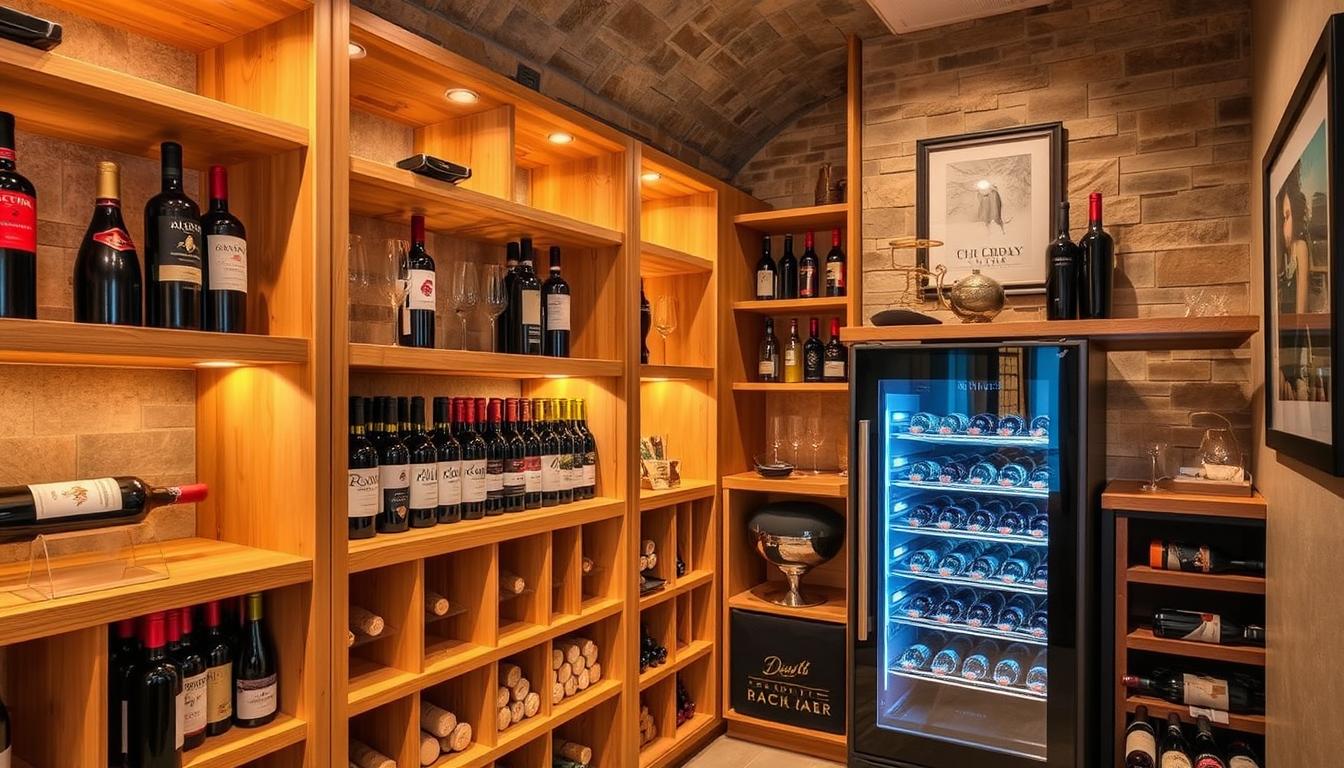Have you ever sat down for dinner, only to realize that the wine in your glass just doesn’t seem to harmonize with the meal before you? That small moment of disconnect can transform an enjoyable meal into a confusing experience. As the world of wine expands, with thousands of choices available—from the sun-kissed vineyards of California to the historic regions of France—the task of choosing the right wine becomes not just important, but an art form. Imagine the joy of perfectly pairing a delicate white wine with a crispy fish, or a bold red with a savory steak, amplifying the flavors and elevating the culinary delights of your meal.
Wine and food pairing is about more than just red or white; it’s a dance of flavors, textures, and experiences that can enhance every dining occasion. Whether you’re hosting a gathering or simply enjoying a quiet meal at home, understanding the principles of pairing wine and food can enrich your life. This guide aims to demystify the intricate process of selecting the ideal bottle, helping you create memorable moments filled with laughter and good taste.
Key Takeaways
- Pairing the right wine enhances your dining experience, balancing flavors and textures.
- Understanding wine can elevate social interactions and impress guests.
- Exploring diverse wine choices encourages culinary creativity at home.
- Wine pairing principles turn everyday meals into memorable experiences.
- Proper wine selection can enhance special occasions and celebrations.
Understanding the Basics of Wine Pairing
Mastering the art of wine and food pairing opens up a world of culinary delight. Key elements to consider include acidity, body, tannins, sweetness, and alcohol content in wine. Each of these aspects significantly influences how well a particular wine complements your meal.
When considering pairing guidelines, it’s essential to match the intensity of both the wine and the dish. For instance, red wines typically pair better with bold-flavored meats, such as red meat. This is due to the tannins present in red wines, which can enhance the richness of heavier proteins. In contrast, white wines shine alongside lighter-intensity meats like fish or chicken.
Explore the interactions of flavors. White, sparkling, and rosé wines often create contrasting pairings, balancing richer dishes with their acidity. Conversely, red wines frequently provide congruent pairings, deepening the overall taste experience. For those who appreciate contrasting flavors, serve off-dry or semi-sweet white wines with spicy dishes, like those found in Indian or Mexican cuisines, to smoothly counteract heat.
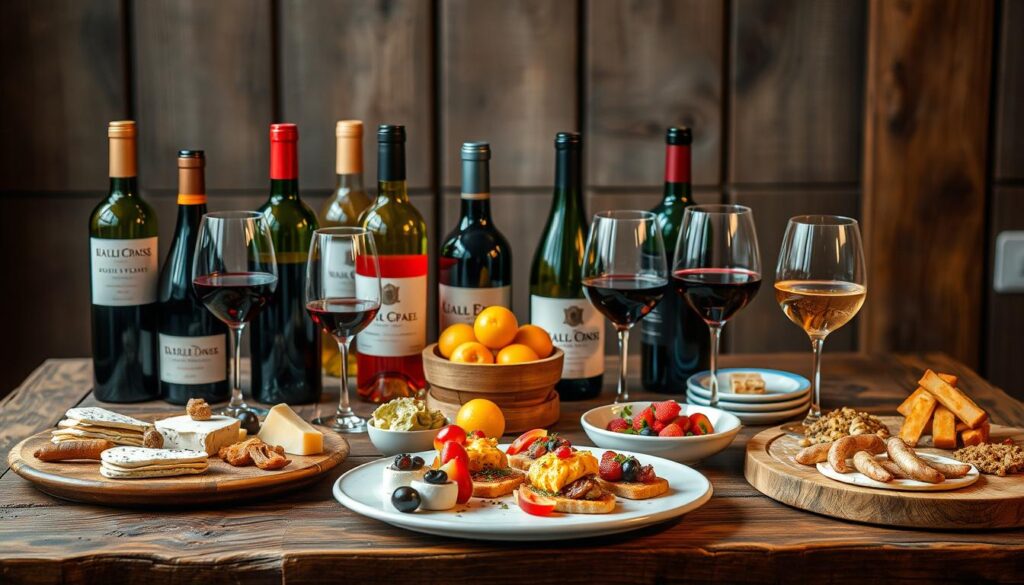
Understanding the characteristics of each wine varietal expands your options. Sparkling wines refresh the palate when served with salty foods, while light-bodied wines can elevate warmer dishes. Meanwhile, full-bodied wines are ideal for cooler-temperature meals, achieving the right balance as you savor your meal.
Some classic pairings include:
- Pinot Noir: Ideal for soups and stews, complementing earthy flavors.
- Barbera: A great companion for pizza, offsetting rich cheese with its acidity.
- Sauvignon Blanc: A citrusy touch that enhances salads.
- Sangiovese: Perfect for classic pasta, particularly tomato and olive oil-based sauces.
- Syrah: Works well with barbeque, its smoky notes blending beautifully with grilled meats.
Mastering basic tips for pairing will ultimately lead to a fulfilling dining experience. Trust your palate and experiment with flavors to find what pleases you most. Great wines, when thoughtfully paired, can elevate not just the meal but the entire occasion.
The Importance of Wine and Food Pairings
Understanding the importance of wine and food pairings can greatly transform your dining experience. The right pairing elevates your meal, enhancing the flavors, aromas, and textures of the dishes while providing a memorable gastronomic adventure.
Food pairing significance lies in its ability to create harmony between the elements on your plate and the glass beside it. Skillfully selected wine not only complements but can accentuate the qualities of your meal, making each bite more enjoyable. When flavors meld perfectly, the dining experience becomes wholly satisfying.
Moreover, expert advice from sommeliers or waiting staff can encourage diners to explore beyond their usual choices. This guidance can lead to adventurous selections that might introduce you to luxurious wine brands you may not have considered otherwise. Enjoying these pairings can significantly influence not only your palate but also the restaurant’s profitability.
As with any art form, food and wine pairing can be subjective yet learned. Three primary philosophies underpin successful menu designs: congruent or contrasting pairings, balanced pairings, and those drawn from narrative and locality. Traditional expressions, such as “what grows together, goes together,” continue to resonate with diners seeking authenticity in their meals.
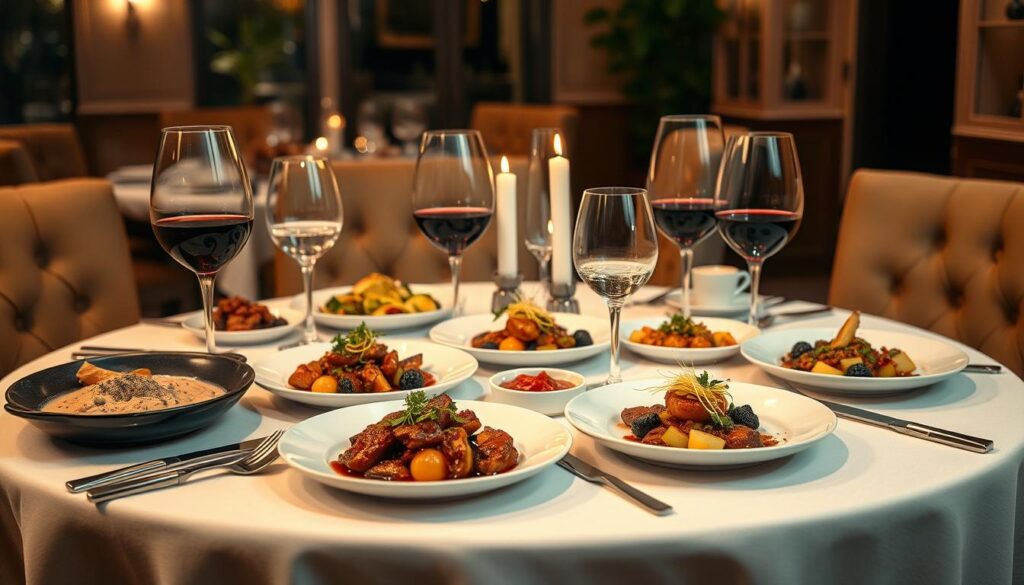
Exploring Popular Wine Varietals
When diving into the realm of wines, understanding popular wine varietals becomes essential for any enthusiast or wine lover. This section will offer insights into the common varieties of both white and red wine, helping you appreciate their unique characteristics and ideal food pairings.
Common White Wine Varieties
Among the popular white wine varietals, several stand out for their distinct flavor profiles and versatility:
- Chardonnay: Known for its adaptability, Chardonnay can range from crisp and refreshing to rich and buttery. It pairs well with grilled chicken and creamy pasta dishes.
- Sauvignon Blanc: This wine’s refreshing acidity and vibrant tropical fruit notes make it a fantastic match with seafood and salads.
- Riesling: Ranging from bone-dry to sweet, Riesling boasts flavors of green apple and peach. Its versatility complements spicy dishes, making it a favorite among wine lovers.
- Pinot Grigio: Characterized by a light and crisp nature, this varietal often features flavors of pear and citrus, ideal for light appetizers.
- Gewürztraminer: Appreciated for its aromatic profile, this wine offers floral and spice notes, making it perfect for pairing with Asian cuisine.
Common Red Wine Varieties
Shifting focus to red wine, the selection of varietals presents a range of flavors and styles:
- Cabernet Sauvignon: Renowned globally, this varietal often features bold flavors and tannins, making it an excellent accompaniment for steak and rich dishes.
- Merlot: Praised for its smoothness and approachability, Merlot suits a variety of foods, including roasted meats and hearty pasta.
- Pinot Noir: Known for its elegance and delicate notes of red fruits and earthy undertones, it pairs beautifully with grilled salmon and mushroom risotto.
- Syrah/Shiraz: This bold varietal impresses with intense blackberry flavors complemented by smoked meat, making it well-suited for barbecued dishes.
- Zinfandel: Gaining popularity for its ripe fruit flavors, it excels with grilled meats and spicy cuisine, becoming a favorite for many red wine enthusiasts.
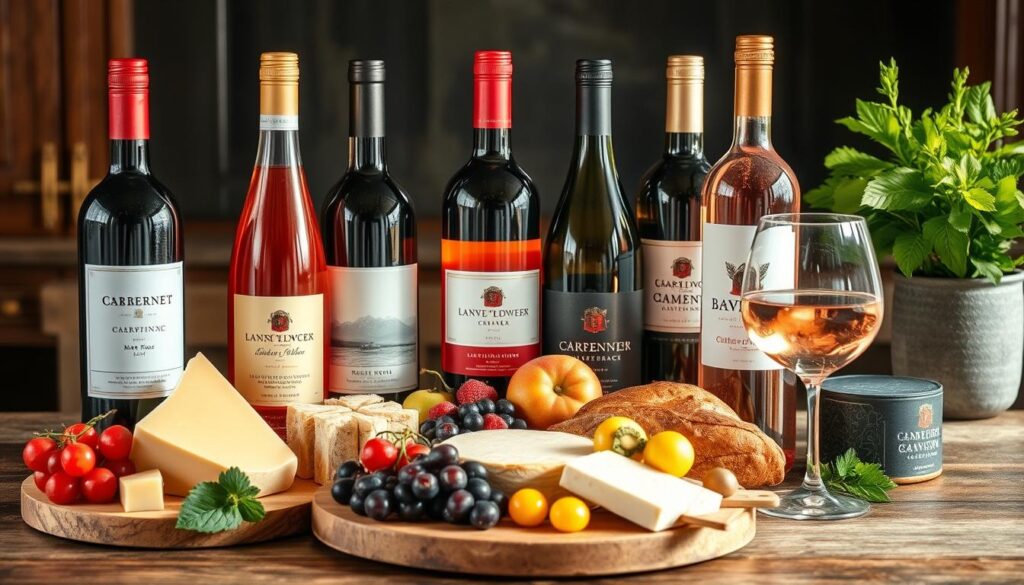
By familiarizing yourself with these popular wine varietals, you’re not just enhancing your palate, but you’re also setting the stage for delightful pairings that will impress your guests and elevate your dining experiences.
Top Tips for Successful Pairings
Crafting successful pairings between wine and food can elevate your dining experience. Understanding how to achieve this involves many factors, notably balancing flavors and considering the texture of both elements. Here are some practical tips to help you create delightful combinations.
Balancing Flavors in Wine and Food
Matching the intensity of flavors plays a crucial role in successful pairings. Lighter dishes, such as salads topped with citrus vinaigrette, work wonderfully with wines that are equally light-bodied. For example, an off-dry Riesling can offer a lovely contrast to the spiciness of a curry, enhancing the overall taste experience. When you choose richer dishes, think about selecting a robust wine, such as a red from the Rhône region, which complements flavors like cherry sauce on duck. Striking a balance between the wine and the food allows each to shine without overpowering the other.
Considering Texture and Weight
The texture and weight of both wine and food significantly affect their harmony. Red wines, such as Cabernet Sauvignon and Syrah, contain tannins that can cut through the fat of a well-marbled steak, creating a perfect balance. On the other hand, high-acid white wines pair beautifully with acidic dishes, making them a great choice for fresh tomato gazpacho. Alternatively, when indulging in desserts, consider pairing a treacle-like sweetness with a sharp late harvest Chenin Blanc. This thoughtful consideration of wine texture not only provides balance but also enriches your dining experience.
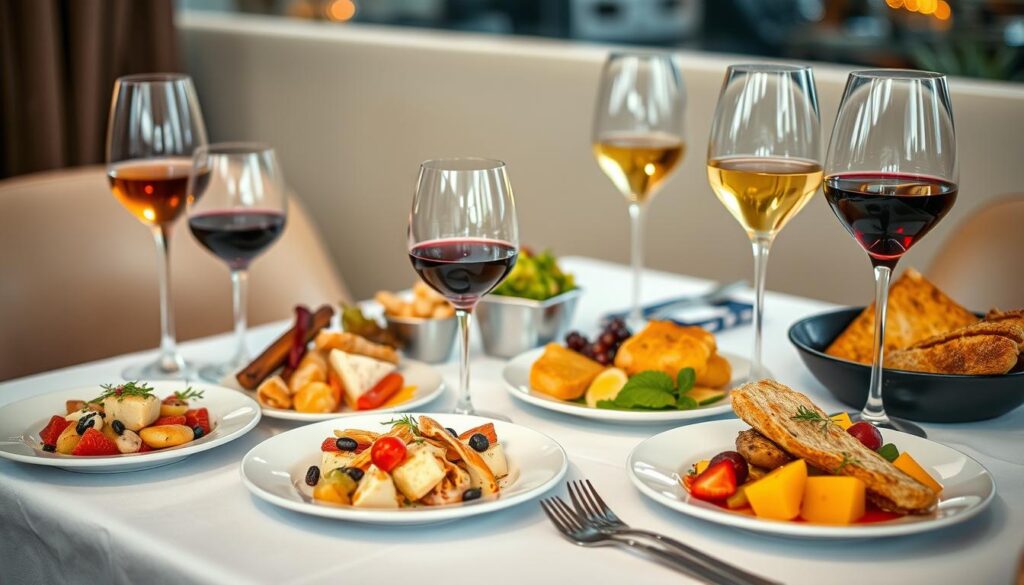
Classic Pairings for Every Meal
For wine enthusiasts, understanding classic pairings is essential for enhancing your dining experience. These traditional combinations offer guidance for meal matching that has stood the test of time. Here are some cherished pairings to inspire your next meal. When it comes to classic pairings, few things go better than a rich, bold red wine with a juicy steak or a crisp, acidic white wine with a delicate seafood dish. However, traditional pairings are not limited to just dinner – brunch offers its own unique opportunities for wine pairing. Whether you’re enjoying eggs benedict, smoked salmon, or even a decadent French toast, there are perfect wine pairings for brunch that can elevate your mid-morning meal.
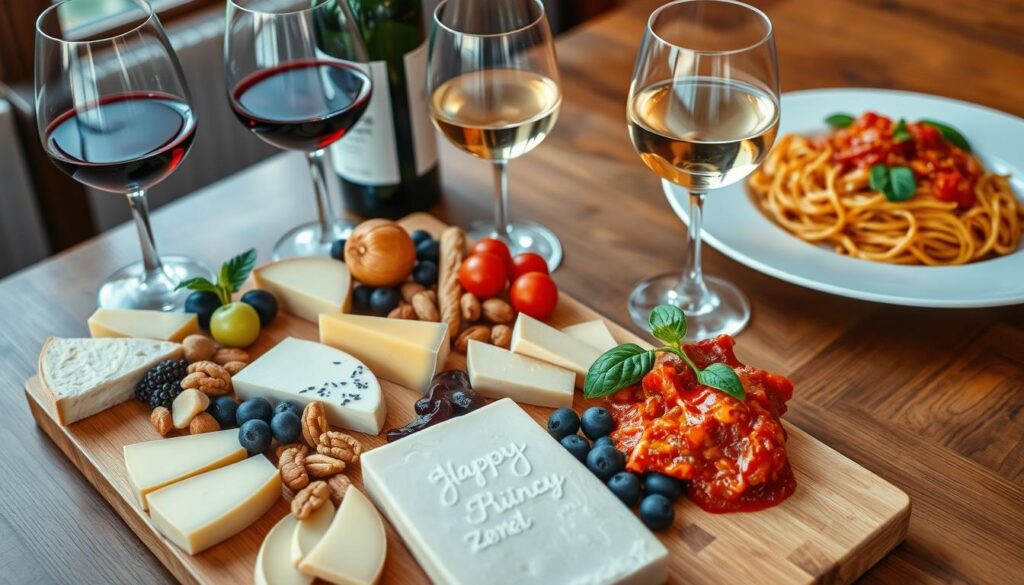
When it comes to appetizers, pairing Champagne with oysters is a quintessential choice. A study highlighted *umami synergy*, showcasing how the combination creates an exceptional flavor sensation. Moving on to main courses, a classic match is Cabernet Sauvignon with steak. The steak’s gamey flavors beautifully complement the dark fruit notes and tannins of the wine.
For cheese lovers, consider Sancerre with creamy goat cheese. The wine’s high acidity balances the richness of the cheese, making it a delightful combination. If you crave a light option, pairing Provence rosé with Niçoise salad offers a refreshing contrast, enhancing the dish’s depth with its dry finish.
Desserts deserve attention too. A sweet wine like Sauternes with foie gras creates a luxurious match, harmonizing the richness with its gentle acidity. For chocolate lovers, a dessert wine can be the perfect companion—think dry sparkling wines that enhance fruity dessert flavors without amplifying their sweetness.
- Chardonnay complements roasted vegetables and grilled fish.
- Light red wine, like Pinot Noir, stands out with salmon.
- Grüner Veltliner pairs excellently with asparagus and fresh herbs.
- Full-bodied red wines adeptly balance rich, fatty dishes.
Take these classic pairings as a foundation for your culinary adventures. Experimentation leads to delightful discoveries, so don’t hesitate to try different combinations. With a bit of creativity and awareness of flavor profiles, your dining experiences will truly come alive.
Culinary Delights: Regional Pairing Examples
Regional pairings represent a beautiful intersection between culture and cuisine. Wine culture heavily influences food choices, enhancing meals across various culinary landscapes. Let’s explore how specific regional delights pair beautifully with wine to create an unforgettable dining experience.
Pairing with Italian Cuisine
Italian cuisine is renowned for its vibrant flavors and diverse dishes. When considering wine pairings, think of classic combinations. Chianti, a light red wine, complements various staples such as pasta, pizza, and cured meats. Its acidity balances the richness of sauces, making each bite more enjoyable.
Another excellent choice is Prosecco, a sparkling wine that enhances lighter Italian fare, including seafood dishes and fresh salads. The effervescence cuts through flavors, providing a refreshing contrast. Such pairings exemplify how regional pairings elevate meals, capturing both the essence of Italian cuisine and the sophistication of fine wine.
Matchmaking with Asian Dishes
Asian dishes present a unique challenge due to their complex spice profiles and bold flavors. Riesling, known for its sweetness and acidity, pairs wonderfully with spicy Thai cuisine. It softens heat while highlighting aromatic herbs, creating a balanced experience.
Sauvignon Blanc stands out as another fantastic option, especially with dishes rich in umami or citrus. Its crispness uplifts flavors in sushi and light stir-fries, making it an ideal companion. Exploring these pairings broadens your palate and enhances your appreciation for both wine and food.
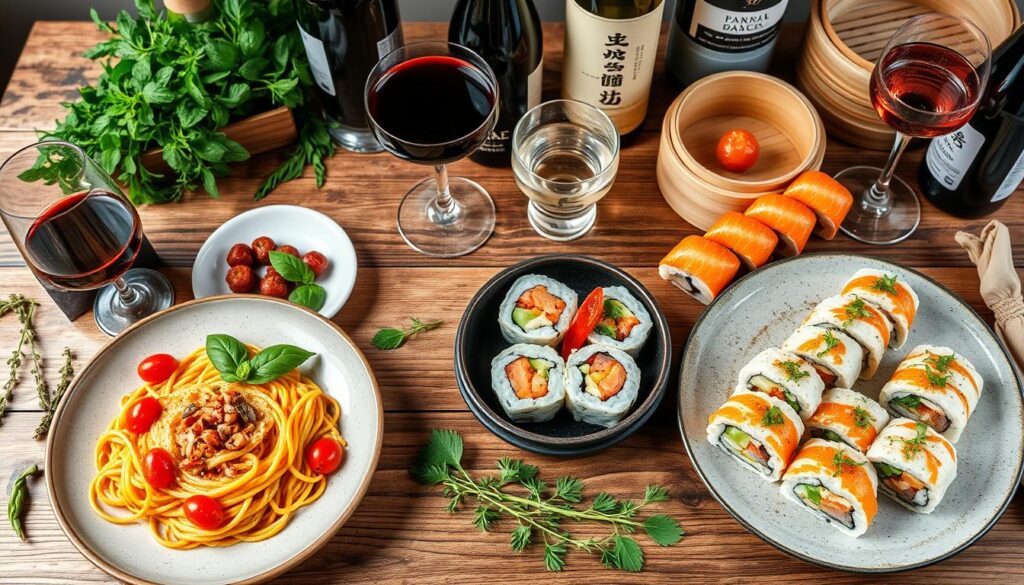
| Cuisine | Wine Pairing | Recommended Dishes |
|---|---|---|
| Italian | Chianti | Pasta, Pizza, Cured Meats |
| Italian | Prosecco | Seafood, Salads |
| Asian | Riesling | Spicy Thai Dishes |
| Asian | Sauvignon Blanc | Sushi, Light Stir-fries |
Enhancing Your Wine Tasting Experience
Creating an inviting atmosphere plays a crucial role in achieving a memorable wine tasting experience. The right ambiance not only sets the stage for tasting but also contributes significantly to enhancing enjoyment. Consider how elements such as lighting, music, and temperature can transform your tasting events into delightful occasions. Here are some practical tips to craft the perfect environment for your next gathering.
Creating the Perfect Atmosphere
To truly elevate your wine tasting experience, incorporate these strategies:
- Lighting: Use soft, warm lights to create a cozy atmosphere. Dimmed lights can foster an intimate setting, making the event feel special.
- Music: Curate a playlist that complements the mood. Soft instrumental music helps maintain a relaxed vibe, allowing guests to engage in conversation without distraction.
- Temperature: Ensure the wines are served at the optimal temperature. Whites should be chilled, while reds can be slightly warmer to encourage flavor development.
- Aromas: Consider scents that enhance the experience without overpowering the wine. Light, pleasant fragrances can add another sensory layer without disrupting the tasting process.
Creating a rich ambiance significantly influences each guest’s sensory perception. Pay attention to how the lighting affects the color and clarity of the wine. A well-lit space can highlight the nuances in its hue, revealing hints about the wine’s age and variety. The aromas released when swirling the wine will be more pronounced, enhancing overall enjoyment.
| Element | Impact on Experience |
|---|---|
| Lighting | Invokes a warm, inviting feel by highlighting the wine’s color |
| Music | Sets a calm backdrop for tasting and socializing |
| Temperature | Ensures wines showcase their intended flavors and aromas |
| Aromas | Enhances sensory engagement without overwhelming the palate |
With a thoughtful approach to ambiance, you can create a wine tasting experience that will resonate with your guests long after the event concludes. Remember, every detail counts when striving for a memorable gathering that leaves an impression.
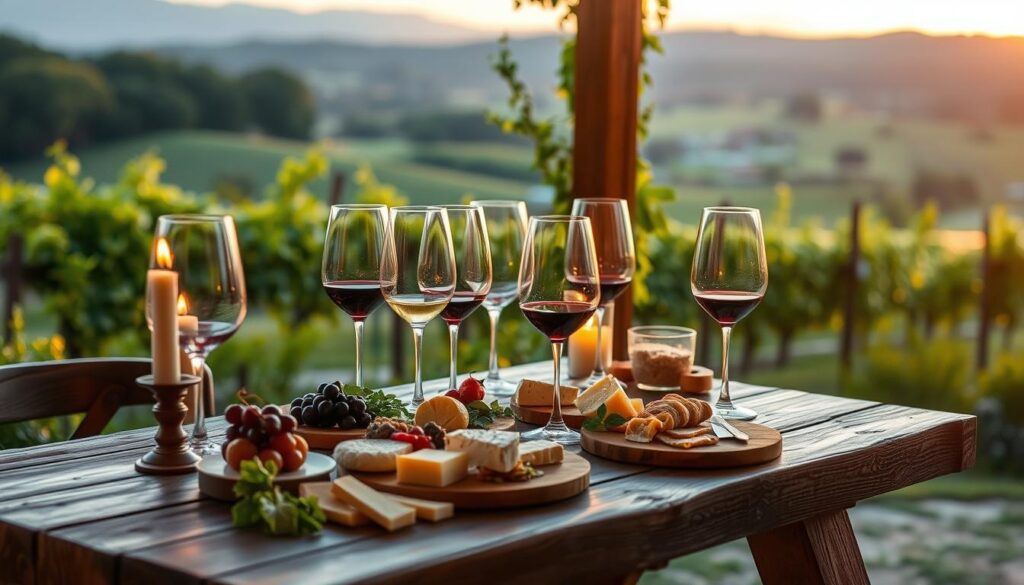
Gastronomy and Wine Culture: A Perfect Harmony
The intersection of gastronomy and wine culture reflects a rich tapestry woven through historical and cultural threads. Wine enhances not just our meals but the entire dining experience. This relationship encourages a deeper appreciation for how these two elements engage with one another.
In recent years, a surge in new grape varieties and wineries has significantly expanded options for pairing wine with food. This growth heralds a new era where the emphasis lies on achieving *perfect harmony* rather than merely creating a pairing. Terms like ‘harmony’, ‘chord’, and ‘accompaniment’ are becoming more prevalent in wine discourse, pointing to a sophisticated understanding of the relationship between these two culinary essentials.
The traditional approach, where fish is paired with white wines and meat with red wines, is evolving. As consumer preferences shift and wine production adapts, these long-standing rules are beginning to blend with contemporary trends. Understanding the weight of both food and wine plays a vital role in achieving balance. Factors such as the raw materials used, fat content, intensity of flavors, alcohol content, tannin concentration, grape varieties, and aging time all contribute to the intricacies of gastronomy and wine culture.
Young white wines are generally understood to be the lightest, followed by more structured whites and various types of red wines. Recognizing these nuances is essential for anyone looking to enhance their dining experience. The principles of association and contrast are instrumental in harmonizing dishes with wines, allowing for flavor enhancement through considerations of color, temperature, texture, and sweetness.
Moreover, the cooking method influences the complexity and flavor profile of dishes, thereby affecting wine choices. Techniques such as grilling, stewing, and saucing not only define the dish but also guide the selection of the ideal wine to complement it. Understanding these culinary techniques proves crucial in achieving the *perfect harmony* between food and wine.
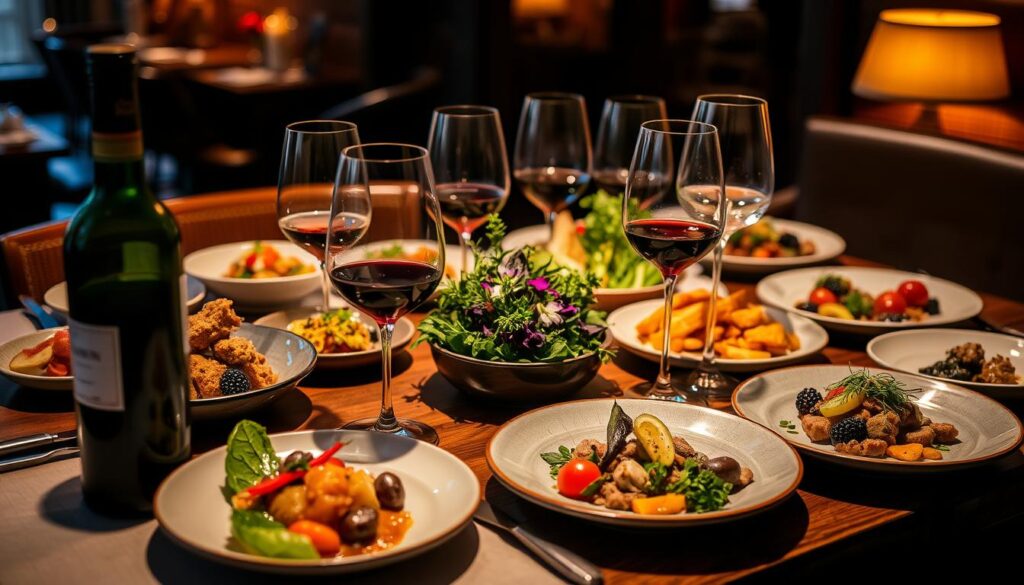
Conclusion
As we reach the conclusion of this exploration into the art of wine and food pairing, it’s clear that mastering this skill can truly transform your dining experiences. Our summary reveals that understanding different varietals and their interactions with various dishes is key to achieving delightful flavor balances. Whether it’s enjoying a classic pairing like Sauvignon Blanc with goat cheese or experimenting with innovative combinations, the possibilities are endless.
Many have found that enhancing your culinary experience is about enjoyment, focusing less on perfection and more on the engaging experiences that come from unique pairings. By embracing the potential positive outcomes of unexpected choices, you open the door to satisfying discoveries that can charm your palate. As you delve deeper into the connection between gastronomy and wine culture, keep in mind the significance of creativity and personal preference.
Ultimately, don’t shy away from exploring the diverse world of wine and food pairing. Each meal presents a chance for a new adventure on your plate, inviting you to create memorable moments that celebrate the beauty of flavor. So savor every sip and bite, and allow your taste experiences to guide you on this delicious journey.
